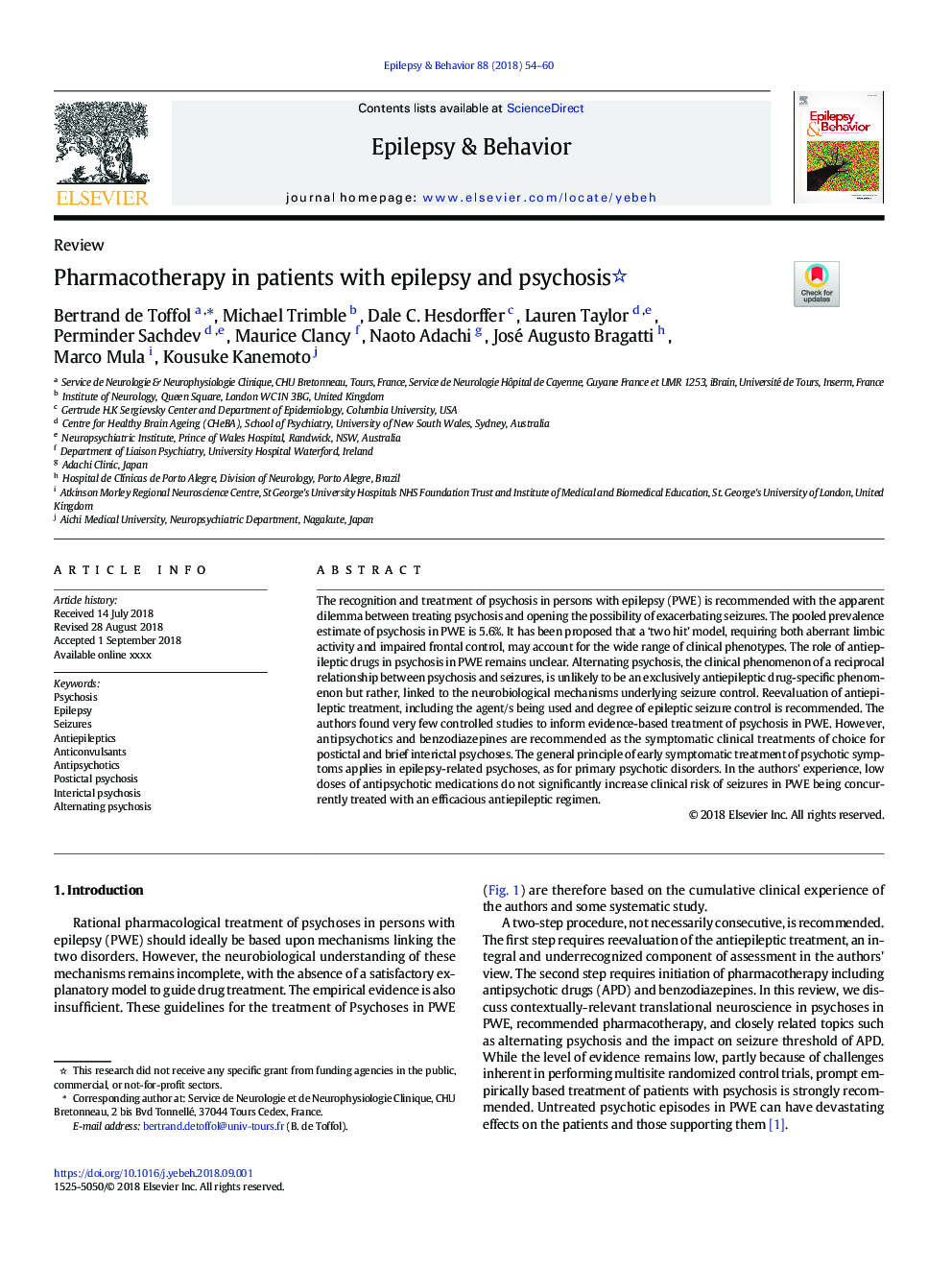| Article ID | Journal | Published Year | Pages | File Type |
|---|---|---|---|---|
| 10148586 | Epilepsy & Behavior | 2018 | 7 Pages |
Abstract
The recognition and treatment of psychosis in persons with epilepsy (PWE) is recommended with the apparent dilemma between treating psychosis and opening the possibility of exacerbating seizures. The pooled prevalence estimate of psychosis in PWE is 5.6%. It has been proposed that a 'two hit' model, requiring both aberrant limbic activity and impaired frontal control, may account for the wide range of clinical phenotypes. The role of antiepileptic drugs in psychosis in PWE remains unclear. Alternating psychosis, the clinical phenomenon of a reciprocal relationship between psychosis and seizures, is unlikely to be an exclusively antiepileptic drug-specific phenomenon but rather, linked to the neurobiological mechanisms underlying seizure control. Reevaluation of antiepileptic treatment, including the agent/s being used and degree of epileptic seizure control is recommended. The authors found very few controlled studies to inform evidence-based treatment of psychosis in PWE. However, antipsychotics and benzodiazepines are recommended as the symptomatic clinical treatments of choice for postictal and brief interictal psychoses. The general principle of early symptomatic treatment of psychotic symptoms applies in epilepsy-related psychoses, as for primary psychotic disorders. In the authors' experience, low doses of antipsychotic medications do not significantly increase clinical risk of seizures in PWE being concurrently treated with an efficacious antiepileptic regimen.
Keywords
Related Topics
Life Sciences
Neuroscience
Behavioral Neuroscience
Authors
Bertrand de Toffol, Michael Trimble, Dale C. Hesdorffer, Lauren Taylor, Perminder Sachdev, Maurice Clancy, Naoto Adachi, José Augusto Bragatti, Marco Mula, Kousuke Kanemoto,
